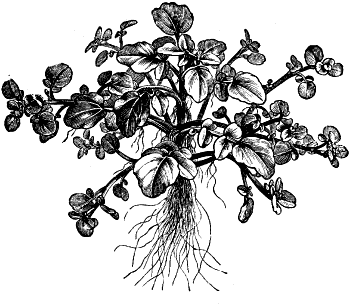A spring chicken from an unlikely source.
The book is awkward for kitchen use. Traditional British Cooking has a big (12x9¼ inch) coffee table format and in the coffee table style some two thirds of its layout consists of glossy color photographs. The frontispiece identifies Hilarie Waldon as “Consultant Editor,” code for paltry participation in the project. The following page discloses that ten obscure authors contributed “additional recipes” but does not disclose what it is they supplement. The book includes a section on “Cakes and Bakes;” anything called a ‘bake’ ordinarily is an abomination.
Waldon herself has, according to her publisher, written thirty seven cookbooks. They range in content from Japanese, Korean and Thai through traditional French to barbecued and grilled foods. None of this amounts to a promising pedigree, but Traditional British Cooking, which originally appeared in 1997, was successful enough to justify a second edition in 2010. We got the book used for less than ten bucks and forgot about it for years nearly consigning it to the pulper during our most recent decennial cookbook cull. That would have been a mistake.
Traditional British Cooking is a remarkably good book with an impressive range of recipes. One of them, “Chicken in Green Sauce,” would not appear to have either ancestor or decendant so, although its ingredients and technique are recognizably British it cannot be, strictly speaking, traditional. The recipe is Plain and Easy (Mrs. Glasse would be proud); the only green in the sauce is watercress. All of this belies its considerable quality: A keeper for any kitchen. Our adaptation does differ, however, from the original in significant respects as disclosed in the Notes. Four surprising servings.

- 2 Tablespoons unsalted butter
- 1 Tablespoon olive oil
- salt and pepper
- 8 chicken thighs (but see the Notes)
- a chopped sweet onion (like Vidalia) cut into the thinnest arcs
- about 2/3 cup dry hard cider
- about 2/3 cup chicken stock
- 1 teaspoon dried thyme
- about 2/3 cup heavy cream
- 6 oz baby watercress
- about 2/3 cup chopped scallion greens
- Season the chicken then melt the butter and oil in a heavy skillet (either cast iron or nonstick is best) over high heat, brown the chicken and remove it form the pan.
- Reduce the heat to medium and soften but do not brown the onion, usually in less than 10 minutes.
- Add the cider, stock and thyme.
- Bring the mixture to a boil, add the chicken, immediately reduce the heat to a simmer and cook the chicken gently under partial cover for about 20 minutes.
- Remove the chicken from the skillet (again), increase the heat to high and reduce the sauce in the skillet to a mere quarter of a cup.
- Stir the cream into the skillet over medium heat followed by about 2/3 (the fraction of choice for this recipe) of the watercress and cook just until the sauce begins to thicken. Do not cook it too long: You want your watercress to stay spry.
- Return the chicken to the skillet (again) to warm it through, stir in the remaining watercress with the scallions and serve straightaway.
Notes:
-Use any chicken pieces you like, it is just that we prefer thighs.
-Add some (thawed) tiny frozen pearl onions at Step 3 if you like. We do.
-The original recipe uses white wine, which is just as good but not as Old School English as the cider. A dry Alsatian Riesling works best. An Alsatian Gewurztraminer is a treat to drink with this dish.
-The original recipe is timidly seasoned with two sprigs each of fresh tarragon and thyme. With those mounts you might as well bother, and for use the tarragon at discernable scale only would clash with the watercress.
-The scallions as is often the case are our addition to the original recipe.
